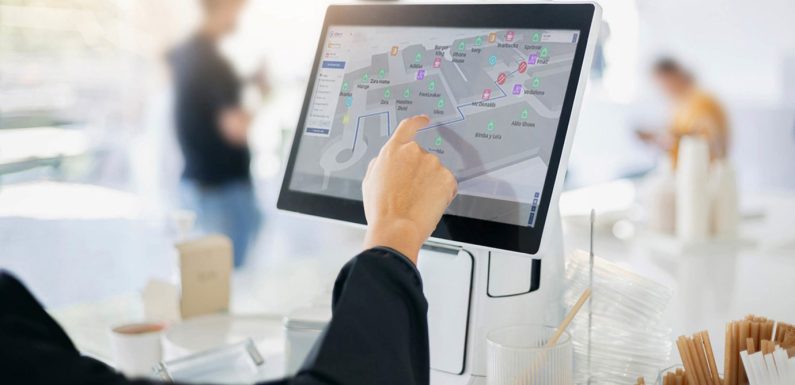
Indoor mapping solutions are digital maps for indoor spaces. They make it easy to navigate through a shopping center or airport or to find where the nearest printer is in an office. These solutions help provide solutions to quickly and easily guide users from point A to point B.
The developer’s role in unleashing mapping potential
As a developer, creating an indoor mapping solution for your clients can empower their businesses. For example, it can help visitors find their way into and through a building, aid asset management by keeping track of equipment, or help workers find the plumbing and electrical lines easily.
Design with the user in mind
Before creating a digital indoor map, it is important to understand what you want to accomplish. Your goal may be to create an efficient floor plan with information to help users find their destination. For this, a developer would need an understanding of floor plans and indoor mapping standards.
Know what information you want to add, and visualize the application through the eyes of the user.
- Ensure the layout is simple: Your user may not be familiar with the layout of the establishment they are visiting. Make it easy for them to understand the indoor map. They need to know where they are and where they are going.
- Use easily identifiable symbols: If you use symbols on the map, you need to add a legend and key so that users can quickly establish where they are and where they are going.
- Use simple fonts: The font should be large enough to read easily. It should also be very clear. Fancy fonts may not be easy to read.
- Use responsive design principles: Ensure that a user can access the mapping application on any type of device. This could include anything from a display stand to a mobile device.
Cater to specific needs
Every industry is different, so each client will have different requirements. If you are developing an indoor mapping solution for a shopping mall or a hotel, they would have different requirements.
A shopping mall would need information such as banking, types of shops, dining outlets and types of dining, bathroom facilities, escalators, parking areas, and emergency exits. A hotel may want to display information such as room availability or directions to the pool and dining areas. Both, though, may want to use real-time updates. Each would need the indoor map tailored to their needs.
Essential features for an effective indoor mapping solution
To be truly effective, an indoor mapping solution needs to be immersive and interactive. This means that there need to be real-time updates, and everything needs to be clearly marked.
There should be seamless zoom functionality with extra information. This functionality should work seamlessly, and it should be easy to toggle between the zoom function and normal view.
To illustrate, if a user was in a mall looking for places to eat, they would find the food court on the map. When they zoom in on the food court, perhaps there is more information, like the type of cuisine served. If they click on a specific name, a contact number and operating hours are displayed.
A good routing system to direct the user to their destination is also essential. Adding in reference points that act like landmarks is a good idea too. This will give the user a good indication of where they are.
Accessibility features such as keyboard navigation and voice prompts should be considered to ensure everyone can use the app.
Another feature could be making the center of the map the user’s position. This could help them orient themselves better.
Image: https://www.pexels.com/photo/crop-estate-agent-working-with-computer-in-office-4491459/
Technical expertise for developers
Creating an indoor mapping solution requires a diverse skill set. Backend developers should know programming languages like JavaScript and Python. For the user interface, you may need to know HTML, CSS, React, or Vue.js. You should also have some knowledge of indoor mapping and some experience with GIS (Geographic Information System) software.
When creating an indoor mapping app solution, it is important for a developer to understand floor plans and important features such as amenities and points of interest.
It is equally important that there is Wi-Fi with a strong signal or Bluetooth beacons (which are more accurate) for precise positioning on a routing system. LiDaR (light detection and ranging) is another technology that can be used to determine positioning.
A lot of data is required to develop an indoor mapping solution. It would be wise to store the information in a database in the cloud. This could also help make the application more lightweight and less data-intensive.
If you have experience with 3D modeling or augmented reality technologies, you may be able to use your expertise when creating a digital map.
Making it easy for developers
The process of creating an indoor mapping solution for your client may seem tedious, but there are toolkits available to simplify and streamline the process. You can use these toolkits to create indoor maps, and you can focus on development, design, testing, and implementing your client’s new indoor mapping solution.
Final thoughts
Indoor mapping solutions have changed how we navigate indoor spaces. These solutions work for any industry that uses a large space, like office blocks, factories, airports, hotels, or shopping malls. As a developer, you have an opportunity to shape the future of digital mapping. So use a toolkit that is highly secure, scalable, and affordable and that helps you create the indoor mapping solution you need.

